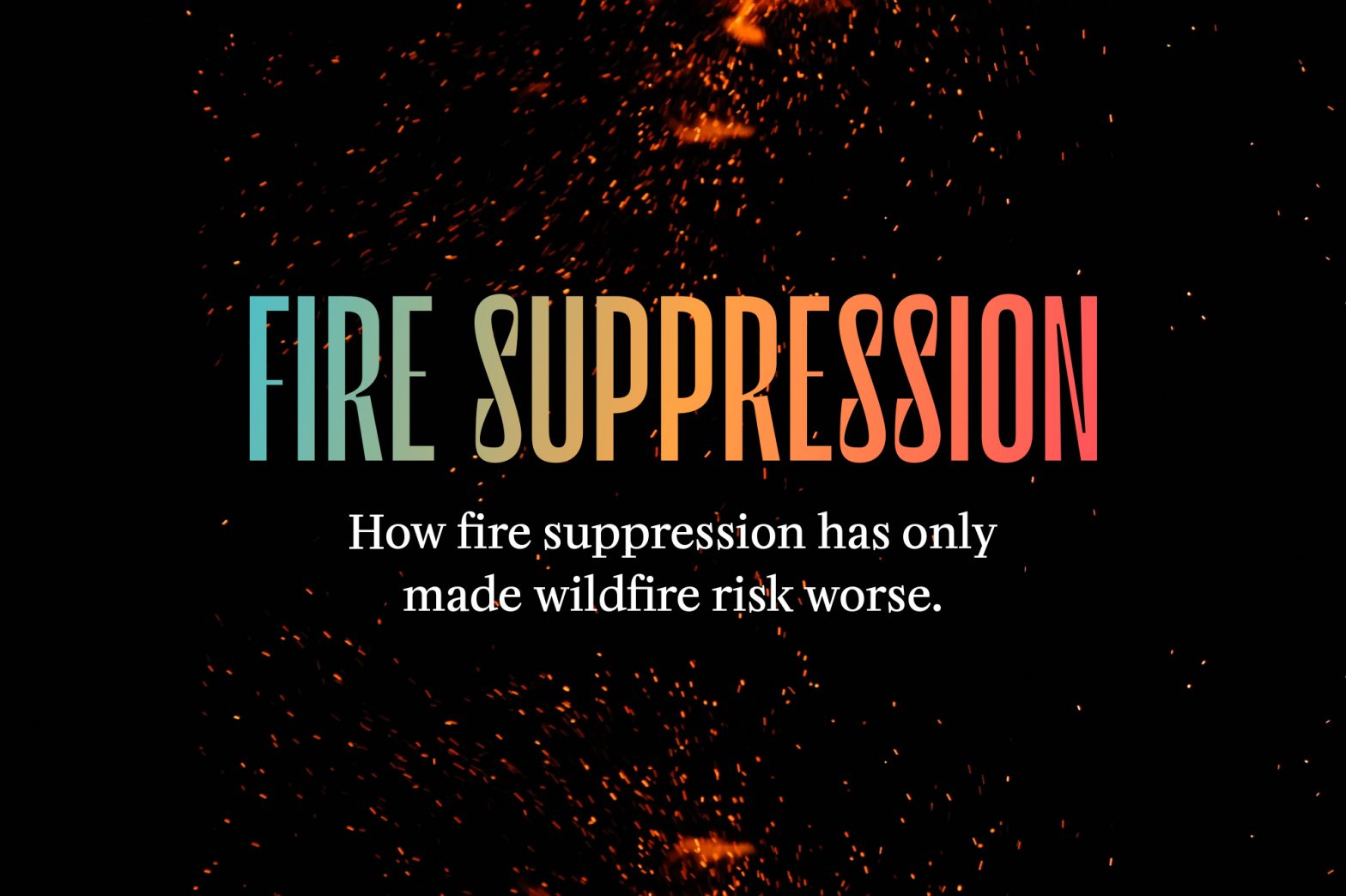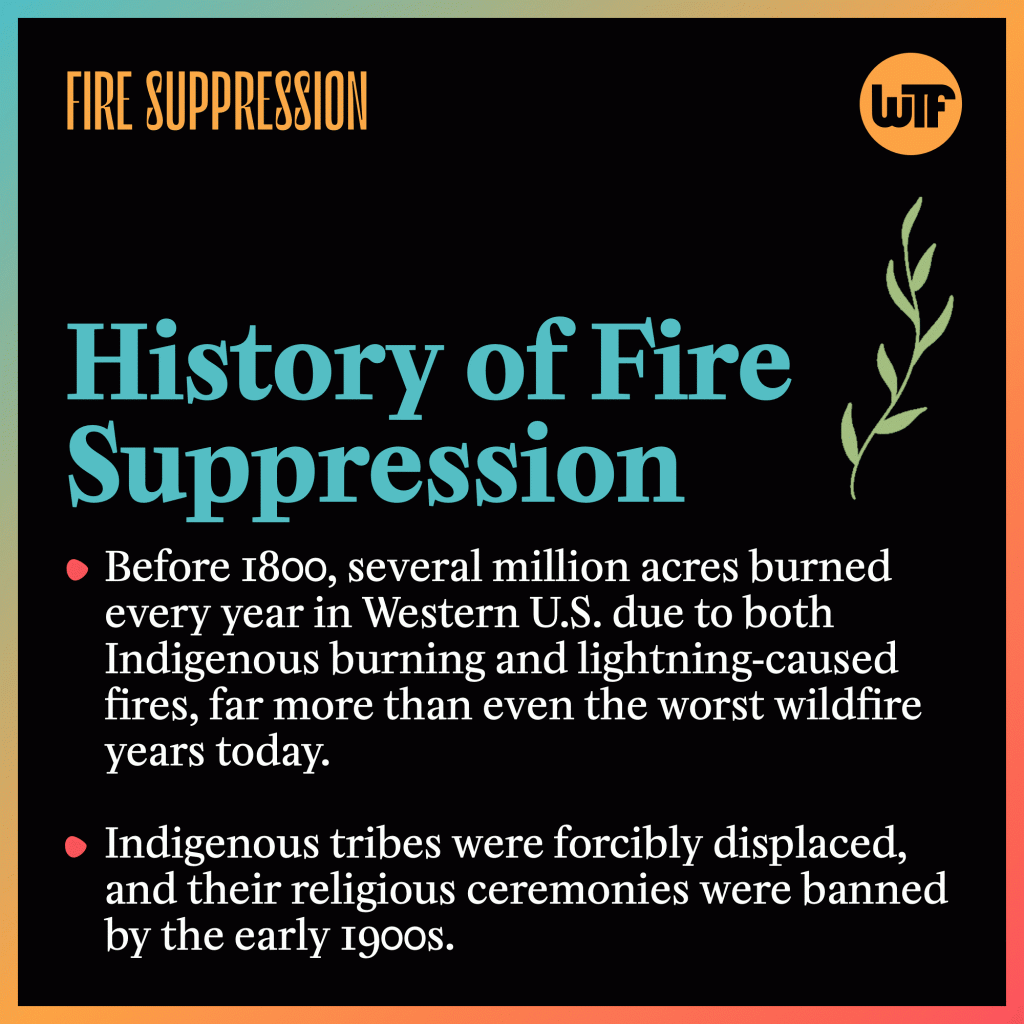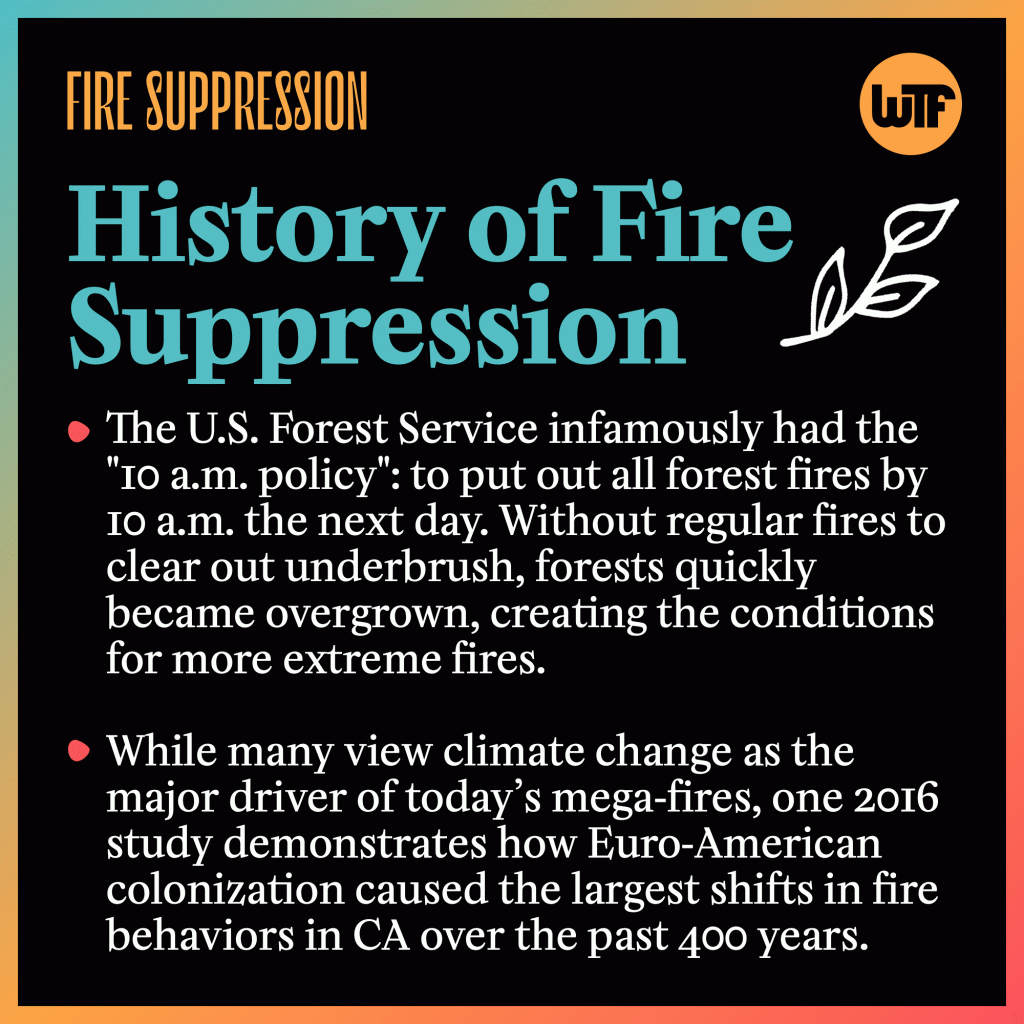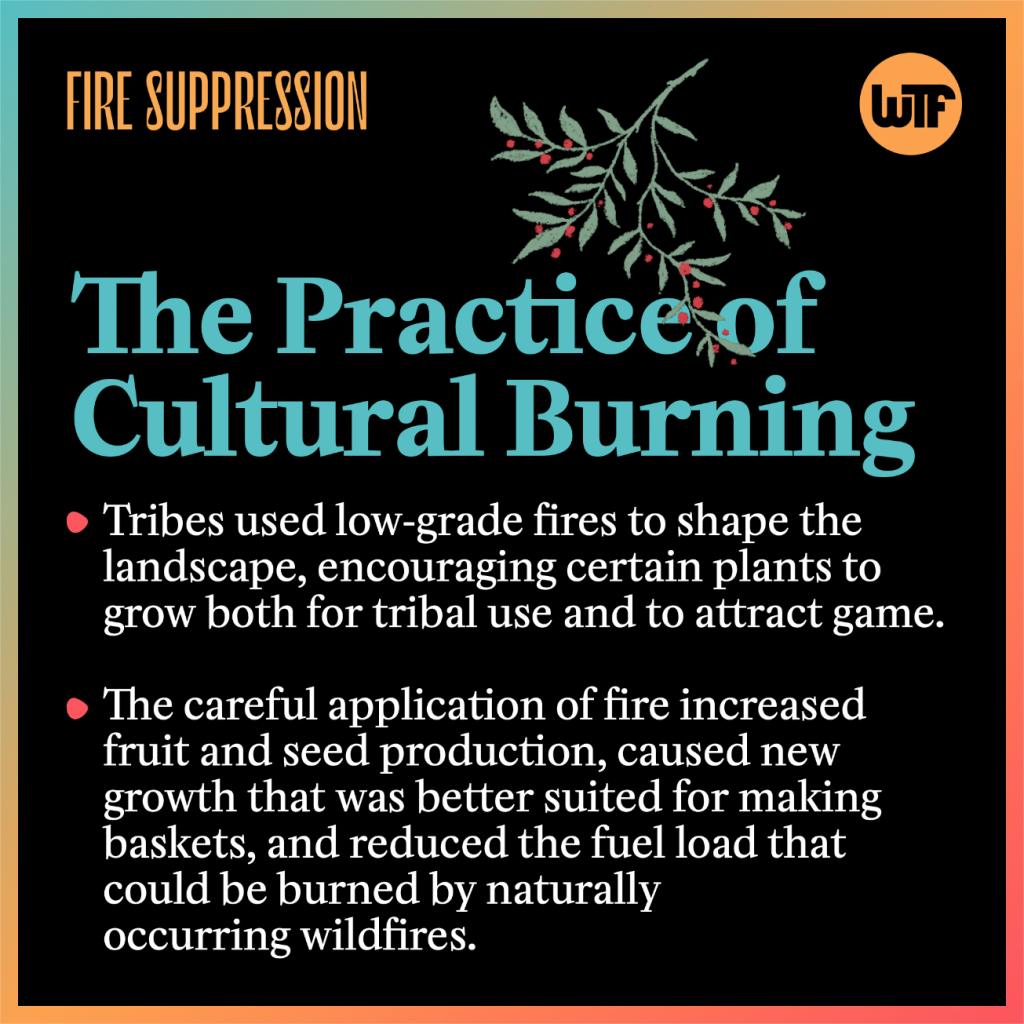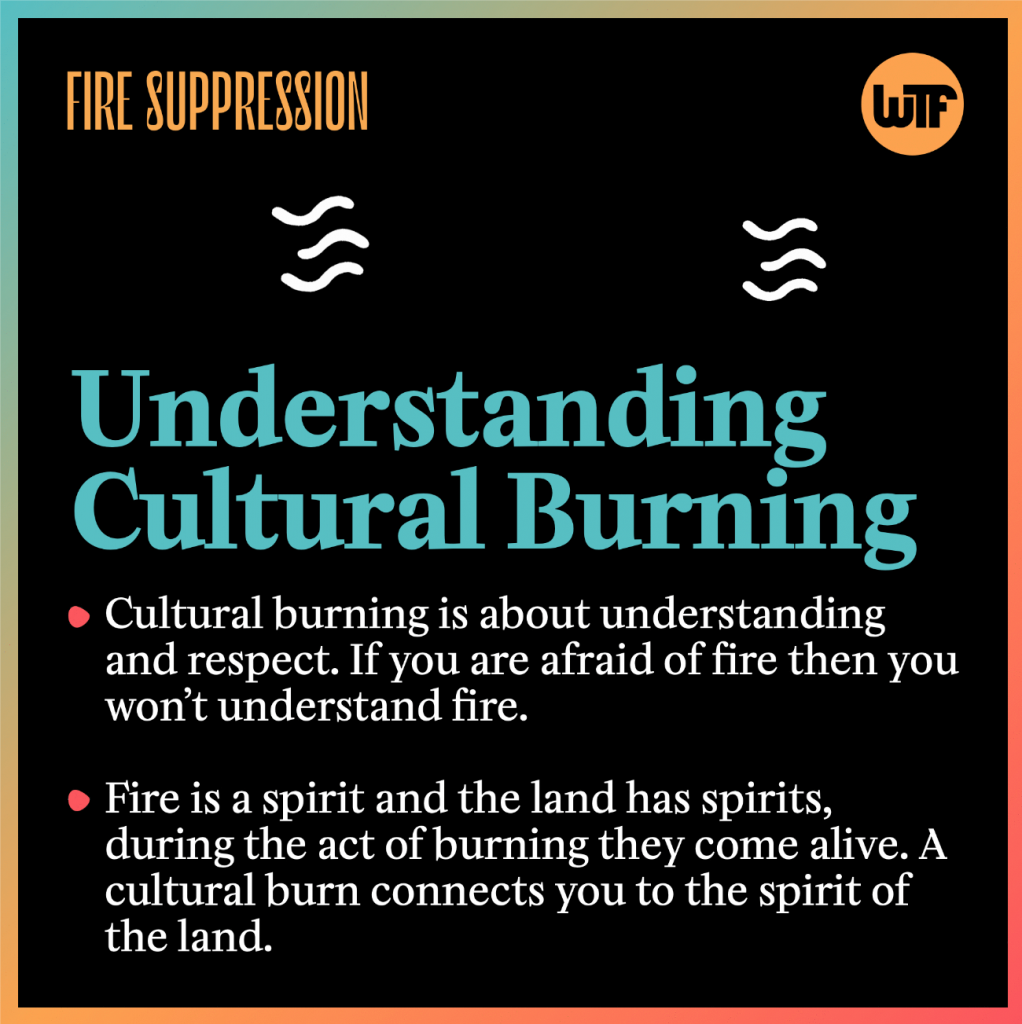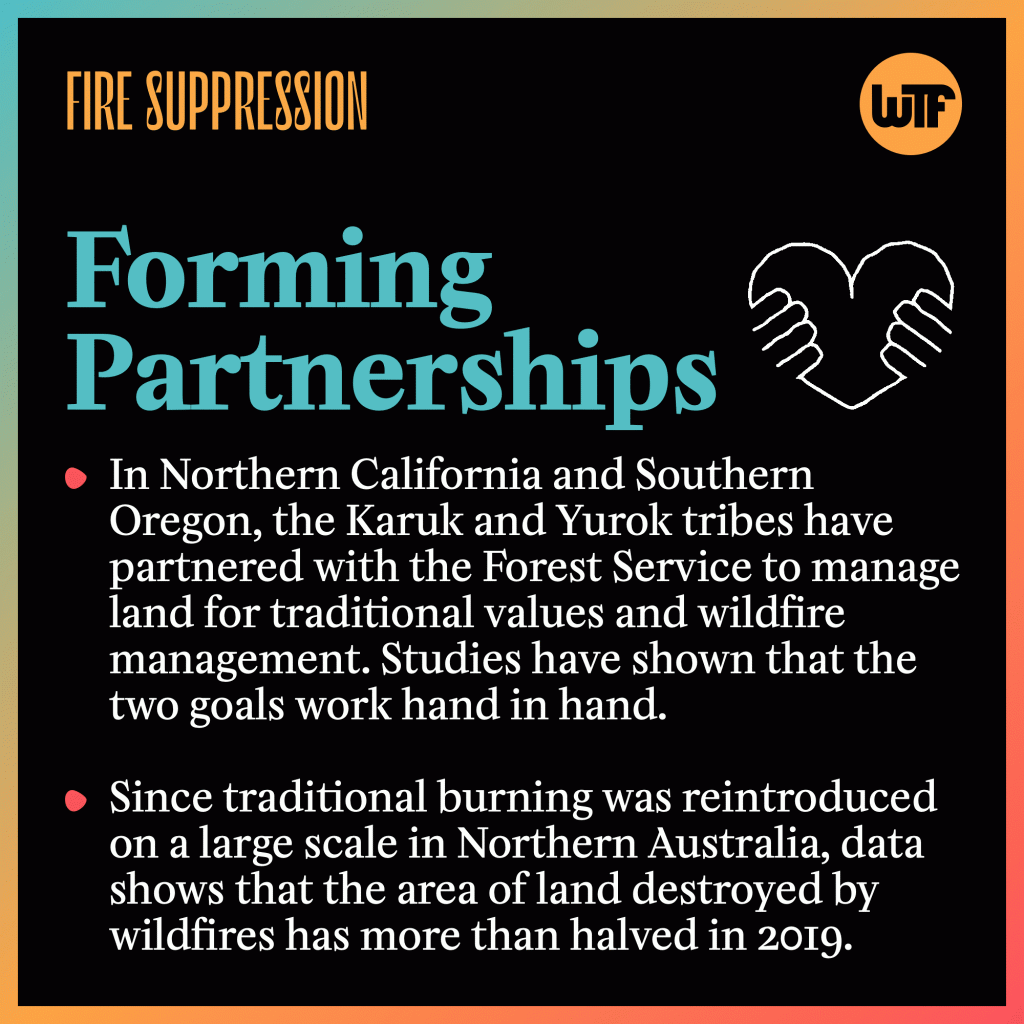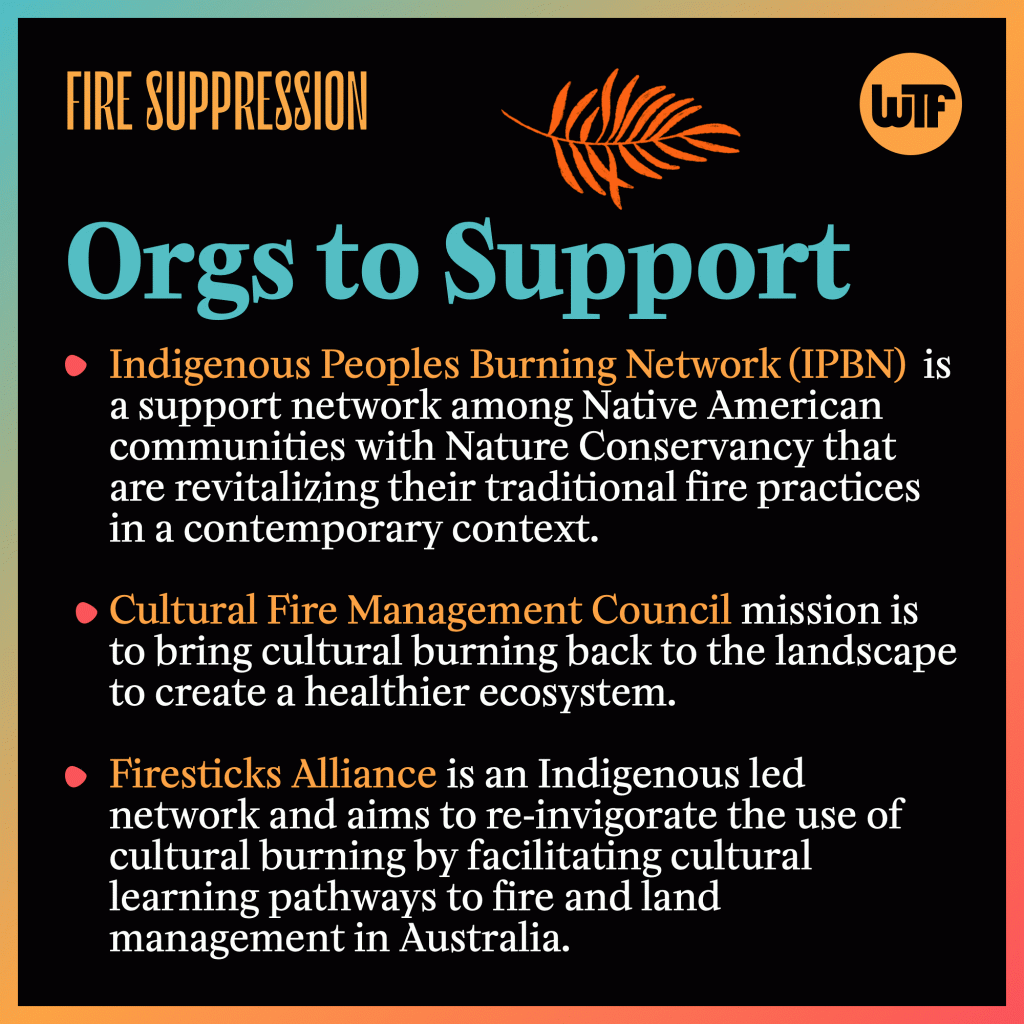Our hearts go out to all those impacted by the fires burning in the Western U.S. 💜 We are in Oregon and can see the sky covered in smoke as we write this. As wildfires spread in California, Oregon, and Washington there are a lot of convos on the internet about climate change. Climate change has undeniably made wildfires worse, but it is not the only reason.
Without regular burns, the landscape grew thick with vegetation that dries out every summer, creating kindling for the fires that have recently destroyed communities.
Learn more about how forced removal of indigenous communities and the banning of religious ceremonies have contributed to the worsening wildfire seasons that we have today.
HISTORY OF FIRE SUPPRESSION
When Western settlers forcibly removed tribes from their land and banned religious ceremonies, cultural burning largely disappeared. Instead, state and federal authorities focused on swiftly extinguishing wildfires.
But fire suppression has only made wildfire risk worse.
Before 1800, several million acres burned every year in Western U.S. due to both Indigenous burning and lightning-caused fires, far more than even the worst wildfire years today.
Indigenous tribes were forcibly displaced, and their religious ceremonies were banned by the early 1900s.
The U.S. Forest Service infamously had the “10 a.m. policy”: to put out all forest fires by 10 a.m. the next day. Without regular fires to clear out underbrush, forests quickly became overgrown, creating the conditions for more extreme fires.
While many view climate change as the major driver of today’s mega-fires, one 2016 study demonstrates how Euro-American colonization caused the largest shifts in fire behaviors in CA over the past 400 years.
THE PRACTICE & UNDERSTANDING OF CULTURAL BURNING
Tribes used low-grade fires to shape the landscape, encouraging certain plants to grow both for tribal use and to attract game.
The careful application of fire increased fruit and seed production caused new growth that was better suited for making baskets and reduced the fuel load that could be burned by naturally occurring wildfires.
Cultural burning is about understanding and respect. If you are afraid of fire then you won’t understand fire.
Fire is a spirit and the land has spirits, during the act of burning they come alive. A cultural burn connects you to the spirit of the land.
FORMING PARTNERSHIPS
In Northern California and Southern Oregon, the Karuk and Yurok tribes have partnered with the Forest Service to manage land for traditional values and wildfire management. Studies have shown that the two goals work hand in hand.
Since traditional burning was reintroduced on a large scale in Northern Australia, data shows that the area of land destroyed by wildfires has more than halved in 2019.
ORGANIZATIONS TO SUPPORT
Indigenous Peoples Burning Network (IPBN) is a support network among Native American communities with Nature Conservancy that are revitalizing their traditional fire practices in a contemporary context.
Cultural Fire Management Council’s mission is to bring cultural burning back to the landscape to create a healthier ecosystem.
Firesticks Alliance is an Indigenous-led network and aims to re-invigorate the use of cultural burning by facilitating cultural learning pathways to fire and land management in Australia.
SOURCES
NPR “To Manage Wildfire, California Looks To What Tribes Have Known All Along”
Guardian “Right Fire for Right Future”
Grist “Tribes and Firefighters Work Together to Prevent Catastrophic Wildfires”
The Conversation “What Western States Can Learn From Native American Wildfire Strategies”
KCET “Tending the Wild”

